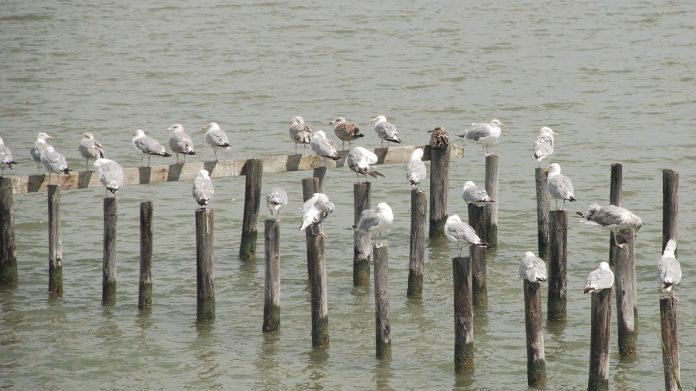ANNAPOLIS, Md. — This year, the Chesapeake Bay Foundation’s assessment of the State of the Bay remained at a D+, but declined by one point from 2018. While concerning, the decline is largely due to ineffective management of the bay’s striped bass population, as opposed to water quality concerns. Of the 13 indicators the foundation assesses, four showed declines.
Despite several years of assaults to environmental protections and flagging political will, most water quality measures are showing improvements. But much more needs to be done.
Efforts must be accelerated to achieve the Chesapeake Bay Clean Water Blueprint goal of implementing practices by 2025 that will reduce pollution sufficiently to restore water quality in local rivers, streams and the Chesapeake Bay. While efforts to save the bay have been underway for decades, the blueprint established in 2010 lays out a path to success.
“There is new hope. President-elect Biden has long been a reliable partner in bay restoration efforts, and we are optimistic that the new administration will take the protection of water quality and human health more seriously,” said foundation president William C. Baker. “Pollution is not just a problem here in the Bay, it is a problem around the world. This is a historic opportunity to demonstrate to the world that by following the science, we can save a national treasure.”
Report
Established in 1998, the foundation’s State of the Bay Report is a comprehensive measure of the Bay’s health. Scientists compile and examine the best available data and information for 13 indicators in three categories: pollution, habitat and fisheries. They assign each indicator an index score from 1-100. Taken together, these indicators offer an overall assessment of Bay health.
“The good news is that recent studies provide evidence of the bay’s increased resiliency. This resiliency is a direct result of the pollution reductions achieved to date. But the recovery is still fragile, and the system remains dangerously out of balance,” said Beth McGee, the foundation’s Director of Science and Agricultural Policy.
Indicators
Of the water-quality indicators, nitrogen and phosphorus pollution improved. The level of dissolved oxygen in the water and water clarity, critical to aquatic life, improved as well.
In fact, monitoring data indicated the 2020 dead zone, the area of oxygen-low water, was the second best in Maryland since the 1980s and among the best in Virginia. There was no change in the toxics score.
Habitat scores are also critical to the health of the Chesapeake Bay. Forests, wetlands and underwater grasses provide food and shelter to wildlife, serve as natural filters that reduce pollution flowing into bay waters, and help improve the wellbeing of communities by slowing flood waters, producing oxygen and providing green spaces.
In the habitat category, the acreage of forested buffers declined slightly, while scores for resource lands and wetlands stayed the same. The score for underwater grasses declined as a result of increased rainfall.
The damage from climate change will need to be addressed as part of a comprehensive solution to improving water quality.
The harvest of fish and shellfish support thousands of jobs and generate billions of dollars each year in the bay watershed. But overfishing, pollution and habitat loss have reduced the productivity of many of the region’s fish and shellfish populations.
In the fisheries category, scores for oysters and crabs improved, while shad and rockfish (striped bass) declined. The rockfish score declined by 17 points, the largest decline in any indicator in more than a decade.
“The situation is deeply concerning. Adult female striped bass, widely used to gauge the overall health of the population, have dropped by approximately 40% from 2013 to 2017,” said Chris Moore, Senior Regional Ecosystem Scientist for the foundation. “Efforts are underway to halt the decline. However, bold actions are needed now to ensure the recovery of this species and there are concerns that states might settle for a reduced population instead of taking strong management actions.”
Jurisdictions
The Chesapeake Bay Clean Water Blueprint requires the bay jurisdictions to develop plans to decrease pollution to local creeks, rivers and the bay. State and local governments have committed to put practices in place by 2025 to achieve specific, measurable reductions.
All jurisdictions except for Pennsylvania and New York have plans in place to meet their goals. Pennsylvania’s latest plan only achieves 73% of its nitrogen-reduction commitments and is underfunded by more than $300 million annually, according to Pennsylvania’s own review.










